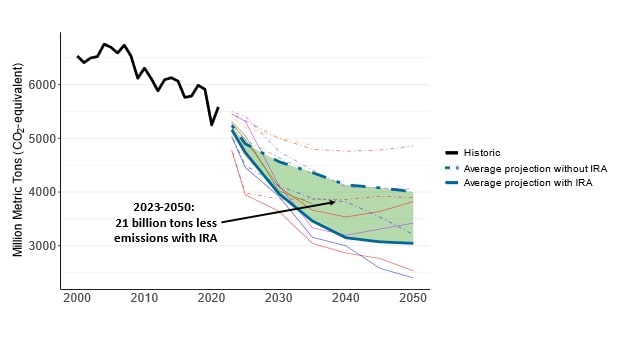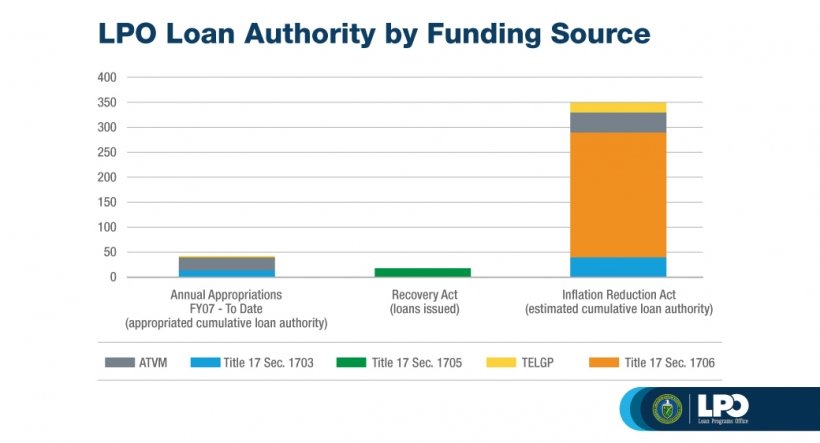Over the last few years there has been a great deal of optimism expressed about the pace of the energy transition, about new technologies and about net-zero carbon goals. The Inflation Reduction Act (IRA) and the Infrastructure Investment and Jobs Act (IIJA) passed Congress and were signed into law providing trillions of dollars of grants, loans and tax incentives to support investment in clean energy technologies such as electric vehicle (EV) charging stations, carbon capture and storage (CCS), hydrogen and other clean forms of energy and related infrastructure.
The additional revenue and the private sector investment in the energy transition created positive confidence about the future. It was also accompanied by regulatory actions that served as the accompanying stick to the investment carrots.
Critical to the success of the energy transition is the development and implementation of new technologies, including renewable energy sources, EVs and EV charging stations, carbon capture and storage, hydrogen, methane detection biofuels, energy storage, and advanced nuclear technology, to name a few.
Enormous progress is taking place in all of these areas, as are enormous investments from the public and private sector. At the same time, public policies in the U.S., as well as Canada, Europe and Asia, are being developed to drive transition goals through lower carbon/net zero commitments, emissions limits, trade restriction and public funding of technology.
Enormous capital investments are needed to meet these public policy and societal goals according to the International Energy Agency (IEA), global investment in clean energy technology needs to be $4.5 trillion by the early 2030s if the Paris Agreement’s 2050 net-zero target is going to be reached.
Over the past couple of years, the U.S. has passed and enacted four landmark spending bills—the IRA, the IIJA, the American Rescue Plan and the CHIPS Act all passed Congress and were signed into law by President Joe Biden, providing $1.6 trillion for grants, loans and tax incentives to support investment in the climate and energy transition, infrastructure and computer chips. This triggered a massive movement by the U.S. government to provide programs and processes to deliver money to companies, universities and communities that qualify for the grants, loans and tax incentives, and will have a profound impact on U.S. energy, infrastructure and manufacturing.

But shortly after their passage, reality struck about the enormous task of actually administering these programs, obtaining the personnel to manage them, developing the metrics used to determine winners, creating the mechanisms to distribute them and enacting the procedures to monitor them and ensuring that funds are being used appropriately.
Much of the $393.7 billion in funds from the IRA that focus on energy are distributed through the Department of Energy (DOE) and its Loan Program Office (LPO). DOE never really played the role of banker before so it has had to hire personnel to manage these programs. That has been a lengthy process. It has also had to work with the U.S. Treasury to develop guidance for the issuance of these funds.
Thus far, of the aforementioned $1.6 trillion, only $125 billion has been spent to date and another $89 billion has been announced.

Perhaps the most important timeline for the Biden administration is Nov. 5–Election Day. Thus far, Americans are quite unaware of the programs initiated under the IRA, IIJA, CHIPS Act and American Rescue Plan. The benefits of these plans are not being recognized by voters around the country, which is frustrating for the administration.
The administration is now working overtime to get out this money to impact voters around the states and satisfy core constituencies like the environmental community. It also fears that, if Biden is not re-elected, Donald Trump, who often refers to Biden’s “Green New Scam,” will work administratively (or potentially with a Republican Senate) to thwart some of the energy transition-focused funding sources.
In the meantime, new technologies are being developed and introduced to address the energy transition. Some of them will receive federal funding and tax credits, while others will pursue private sector sources of finance.
Private equity deals in renewable power, for instance, reached a record high $7.5 billion in 2023. PE money is also being applied increasingly to technologies that address things like methane emissions and detection, battery storage, distributed generation and grid resilience.
Recommended Reading
Energy Transition in Motion (Week of Jan. 10, 2025)
2025-01-10 - Here is a look at some of this week’s renewable energy news, including guidance on technology-neutral clean electricity credits.
API’s Multi-Pronged Approach to Lower Carbon Operations
2025-01-28 - API has published nearly 100 standards addressing environmental performance and emissions reduction, which are constantly reviewed to support low carbon operations without compromising U.S. energy security.
Energy Transition in Motion (Week of Jan. 31, 2025)
2025-01-31 - Here is a look at some of this week’s renewable energy news, including two more solar farms in Texas.
Energy Transition in Motion (Week of Jan. 25, 2025)
2025-01-24 - Here is a look at some of this week’s renewable energy news, including a bright outlook for solar power capacity additions in the U.S.
NextEra CEO: Renewables Offer Cheaper Way to Meet AI Power Demand
2025-03-11 - Some forms of energy are better positioned to meet electricity needs today from both timing and cost perspectives, NextEra Energy CEO John Ketchum said at CERAWeek by S&P Global.
Comments
Add new comment
This conversation is moderated according to Hart Energy community rules. Please read the rules before joining the discussion. If you’re experiencing any technical problems, please contact our customer care team.





